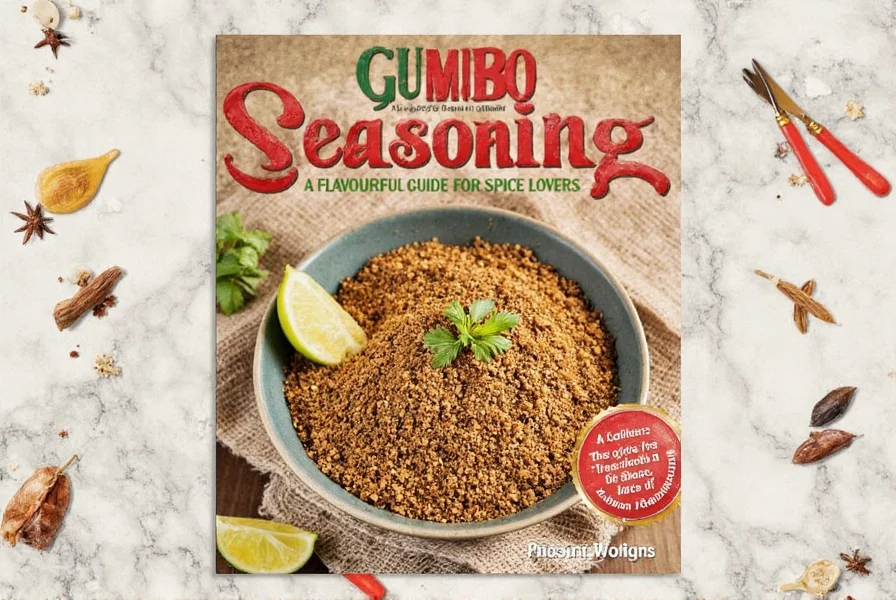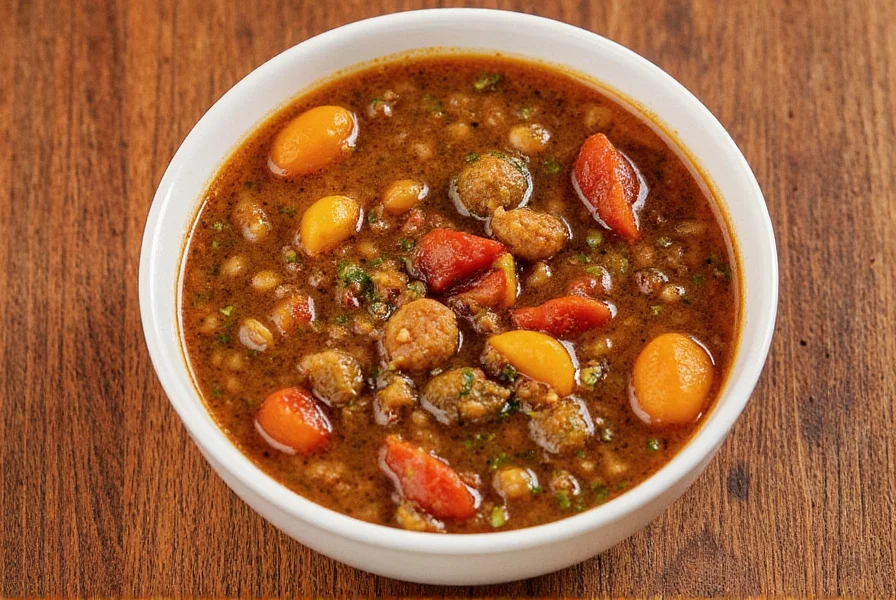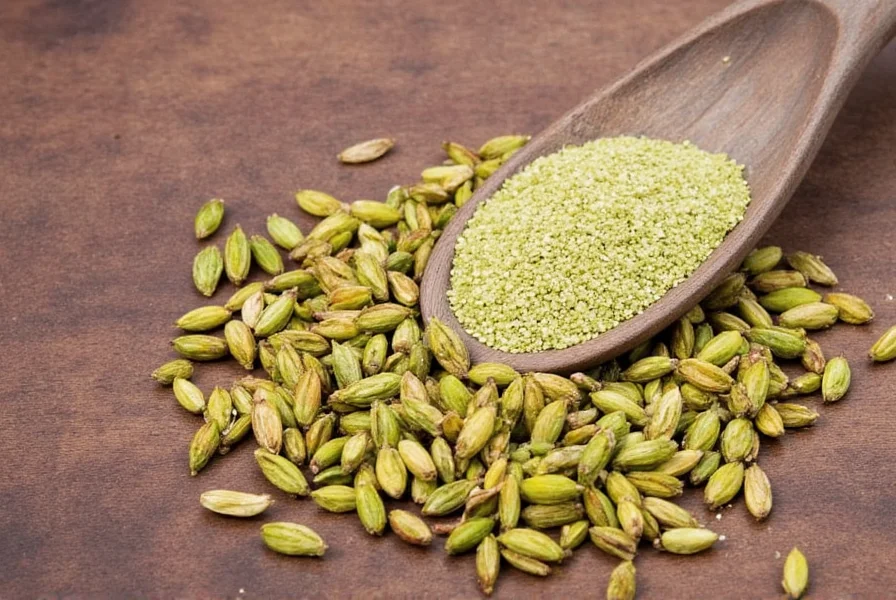What Is File Gumbo Spice?
File gumbo spice is a traditional thickening agent and flavor enhancer made from dried and ground sassafras leaves (Sassafras albidum tree), native to North America. Used by Native American tribes long before Creole and Cajun cuisines adopted it, file serves dual purposes: it provides a silky texture without heaviness while adding subtle herbal notes of citrus, pepper, and mint. Unlike flour or cornstarch, it's added at the very end of cooking to preserve its delicate flavor profile.

Why File Gumbo Spice Matters in Gumbo
In authentic Louisiana gumbo, file plays two critical roles:
- Thickener: Creates a velvety consistency without starchy heaviness
- Flavor Enhancer: Adds a distinctive woodsy undertone that complements smoky meats and seafood
Without file, gumbo lacks depth—like jazz without brass instruments. It's the essential finishing touch that unifies all flavors.
How to Use File Gumbo Spice Like a Pro
Timing and temperature are crucial for perfect results:
- Wait until the end: Add file only after gumbo has finished cooking and is off the heat
- Sprinkle slowly: Add 1/2 teaspoon per quart while stirring constantly to prevent clumping
- Stir gently: Keep stirring for 5 minutes over low heat to fully incorporate
This prevents the gumbo from becoming gelatinous while maximizing flavor release.
File vs. Other Thickeners: A Flavorful Face-Off
| Thickener | Texture | Flavor Contribution | Best For |
|---|---|---|---|
| File Powder | Velvety, silky | Adds herbal, citrusy notes | Traditional Creole gumbo, especially file-based gumbo |
| Roux | Rich, smooth | Nutty depth (varies by color) | Cajun-style gumbos, heartier dishes |
| Cornstarch | Glossy, slightly sticky | No distinct flavor | Quick meals, non-traditional recipes |
| Fat/Okra | Light natural thickness | Mild vegetal flavor | Vegetarian gumbos, lighter broths |
While roux develops flavor during cooking and okra adds early thickness, file must always be added at the very end to preserve its delicate profile.
Buying Guide: Choosing the Best File Gumbo Spice
Not all file spices are equal. Prioritize purity for authentic flavor:
Top Picks for File Gumbo Spice
- Creole Country File Powder
- Features: Organic, finely ground, no additives
- Best For: purists seeking traditional Louisiana flavor
- Bobby Sue's Southern Seasonings
- Features: Blended with garlic and onion for extra zing
- Best For: quick, bold-flavored dishes
- Bayou Fresh File Mix
- Features: Combines file with smoked paprika and cayenne
- Best For: adventurous cooks and fusion cuisine
Look for "pure file powder" labels. Avoid blends unless ingredients complement your recipe.
Recipes with File Gumbo Spice
Transform these classic dishes with file's signature touch:
- Classic Chicken & Sausage Gumbo
- Add file after simmering with chicken, smoked sausage, onions, bell peppers, and celery
- Seafood Gumbo Medley
- Perfect with shrimp, crab, and oysters. Add file just before serving for light richness
- Vegetarian Gumbo with Okra
- Use file to provide body without animal products. Ideal for meatless Mondays!

Storage Tips for Long-Lasting Flavor
File loses potency quickly without proper storage:
- Airtight container: Keep away from heat and moisture
- Dark place: Light rapidly degrades quality
- 6-12 month shelf life: Use within this timeframe for optimal flavor
Pro Tip: Label containers with purchase dates to track freshness easily.

Common Mistakes (and How to Avoid Them)
- Mistake: Adding file too early
- Fix: Wait until gumbo is off the heat before adding
- Mistake: Overusing the spice
- Fix: Start with 1/2 tsp per quart, then adjust
- Mistake: Skipping file entirely
- Fix: Even a pinch elevates the dish's complexity
Remember: File isn't just for thickness—it's about flavor harmony.
Frequently Asked Questions About File Gumbo Spice
What exactly is file gumbo spice made from?
File gumbo spice is made from dried and finely ground sassafras leaves (Sassafras albidum tree). It's not a spice blend but a single-ingredient thickener that adds texture and subtle herbal notes to gumbo.
Is file gumbo spice safe to consume?
Yes, authentic file gumbo spice made from sassafras leaves is safe in culinary amounts. While sassafras root bark contains regulated safrole, the leaves have only trace amounts. Commercial file powder meets FDA safety standards.
How much file gumbo spice should I add to my gumbo?
Use 1/2 to 1 teaspoon per quart of gumbo. Start with 1/2 tsp per quart, let it incorporate for 5 minutes, then taste and adjust. File continues to thicken after adding, so under-season initially.
Can I use file gumbo spice as a substitute for roux?
File and roux serve different purposes. Roux is cooked early for base thickness and nutty flavor, while file is added at the end as a finishing thickener with herbal notes. They can be used together, but file cannot replace roux's foundational flavor profile.
Does file gumbo spice expire?
Yes, file loses potency over time. Stored properly in an airtight container away from light and moisture, it maintains quality for 6-12 months. After this, it won't spoil but will lose flavor and thickening ability. Check for musty smells or clumping as signs of degradation.
Can I use file gumbo spice in dishes other than gumbo?
Absolutely! Beyond gumbo, file works well in soups, stews, sauces, and meat rubs. It pairs especially well with poultry, seafood, and root vegetables. Always add at the end of cooking to preserve its delicate flavor.
Conclusion
File gumbo spice may seem minor, but it carries profound culinary significance. From its Native American origins to its role in modern Creole kitchens, file transforms ordinary gumbo into an unforgettable experience—bridging history and flavor in every spoonful.
Whether making chicken gumbo for a family dinner or impressing guests with seafood medley, never skip the file. It's the final note in a symphony of spices that turns good gumbo into legendary gumbo.










 浙公网安备
33010002000092号
浙公网安备
33010002000092号 浙B2-20120091-4
浙B2-20120091-4